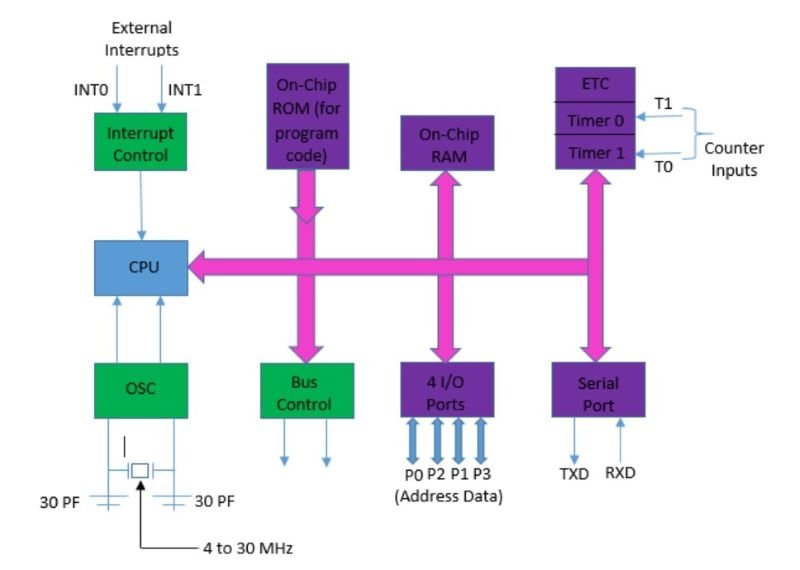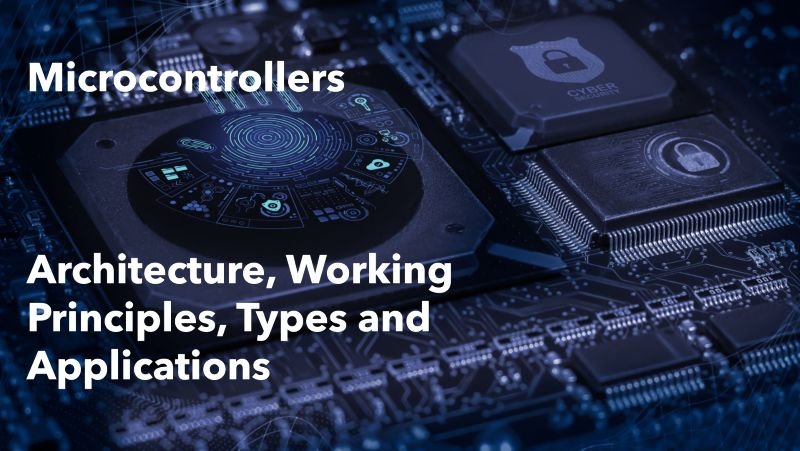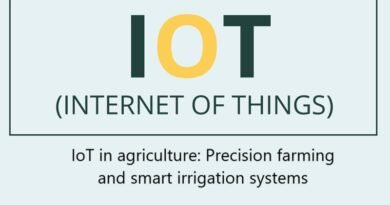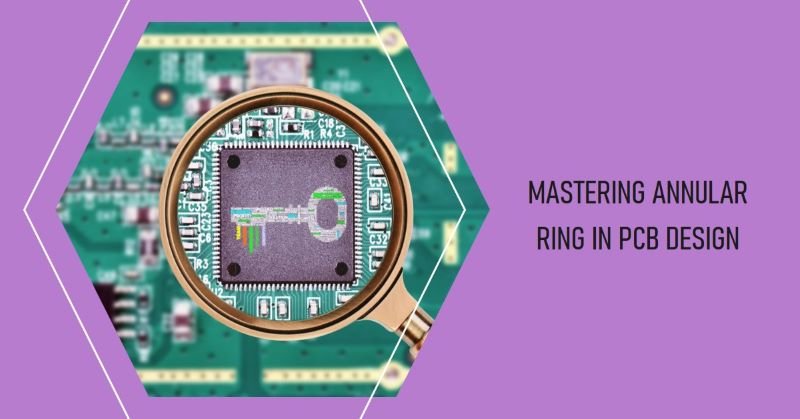Microcontrollers: Architecture, Working Principles, Types and Applications
Microcontrollers are compact integrated circuits designed to govern a specific operation in an embedded system. They act as miniature computers, integrating a processor, memory, and input/output peripherals on a single chip. Found in a myriad of applications ranging from household appliances to industrial machinery and IoT devices, microcontrollers have revolutionized how we interact with technology. Their ability to perform dedicated tasks efficiently makes them indispensable in the modern technological landscape.
Microcontroller Block Diagram

General Components of a Microcontroller
- Central Processing Unit (CPU): The brain of the microcontroller that executes instructions.
- Memory Units: Includes RAM, ROM, and Flash memory for storage.
- Input/Output Ports: Interfaces for communication with external devices.
- Timers and Counters: Components for time-sensitive operations.
- Communication Interfaces: Enable connectivity with other devices or systems.
- ADC/DAC: Convert signals between analog and digital domains.
- Interrupt Control Unit: Manages priority-based task execution.
- Clock Circuit: Provides timing and synchronization for operations.
Detailed Explanation of Each Block
1. Central Processing Unit (CPU)
The CPU is the core of the microcontroller, responsible for fetching, decoding, and executing instructions. It controls all operations and ensures seamless interaction between different components. The CPU’s performance is determined by its clock speed and architecture (e.g., 8-bit, 16-bit, or 32-bit).
2. Memory Units (RAM, ROM, Flash Memory)
- RAM (Random Access Memory): A volatile memory used for temporary storage during program execution.
- ROM (Read-Only Memory): Stores firmware or permanent instructions essential for booting and basic functionality.
- Flash Memory: A type of non-volatile memory used for storing the microcontroller’s program and user data.
3. Input/Output Ports
I/O ports provide interfaces for the microcontroller to communicate with external devices such as sensors, actuators, and displays. These ports enable both digital and analog data exchange, making them critical for embedded system interactions.
4. Timers and Counters
Timers and counters are essential for time-based operations such as generating delays, measuring intervals, and controlling the frequency of signals. They support functionalities like pulse width modulation (PWM) and event counting.
5. Communication Interfaces (e.g., UART, SPI, I2C)
- UART (Universal Asynchronous Receiver-Transmitter): Facilitates serial communication between the microcontroller and other devices.
- SPI (Serial Peripheral Interface): Enables high-speed synchronous data transfer.
- I2C (Inter-Integrated Circuit): Allows multiple devices to communicate using only two wires.
6. Analog-to-Digital Converter (ADC) and Digital-to-Analog Converter (DAC)
- ADC: Converts analog signals from sensors into digital data for processing.
- DAC: Converts digital signals into analog outputs for actuators or other devices.
7. Interrupt Control Unit
The interrupt control unit allows the microcontroller to respond promptly to specific events, ensuring efficient multitasking. By prioritizing and handling interrupts, it enables real-time processing.
8. Clock Circuit
The clock circuit generates timing signals that synchronize all operations within the microcontroller. It determines the execution speed of instructions and overall system performance.
How Microcontrollers Work
Basic Operation
Microcontrollers operate by executing a series of programmed instructions stored in their memory. The following steps outline the basic operation:
- Fetching Instructions: The microcontroller retrieves an instruction from the memory.
- Decoding Instructions: The control unit deciphers the fetched instruction to determine the required operation.
- Executing Instructions: The CPU performs the operation, interacting with peripherals or memory as needed.
Interaction Between Different Blocks Within the Microcontroller
Each block within the microcontroller collaborates during operation. For example, the CPU may use the ADC to convert an analog input, store the digital result in memory, and output processed data through communication interfaces.
Execution of a Program
Microcontrollers execute programs by continuously cycling through fetch, decode, and execute phases. An example of a simple operation is controlling an LED:
- Read input from a sensor (ADC).
- Process the input data (CPU).
- Turn the LED on or off based on the processed data (I/O ports).
Types of Microcontrollers
Classification Based on Architecture
- 8-bit Microcontrollers: Handle 8-bit data, suitable for simple applications.
- 16-bit Microcontrollers: Offer higher precision and performance, used in moderate complexity tasks.
- 32-bit Microcontrollers: Provide high processing power for advanced applications.
Classification Based on Application
- General-Purpose Microcontrollers: Designed for a wide range of applications.
- Embedded Microcontrollers: Tailored for specific embedded systems.
- IoT Microcontrollers: Equipped with connectivity features for Internet of Things devices.
Examples of Popular Microcontrollers
- Arduino: Widely used in prototyping and DIY projects.
- ARM Cortex: Common in high-performance and IoT devices.
- PIC: Known for robustness in industrial applications.
- AVR: Used in hobbyist projects and small-scale embedded systems.
Applications of Microcontrollers
Industrial Applications
- Automation systems: Microcontrollers are used to control machinery in factories, enabling precision and efficiency in processes such as assembly lines and quality control.
- Robotics: They serve as the brains of robots, allowing for tasks such as movement control, object recognition, and environmental interaction.
- Process control: Microcontrollers monitor and adjust parameters like temperature, pressure, and flow in chemical plants and manufacturing units.
Consumer Electronics
- Smart home devices: From thermostats to smart lighting systems, microcontrollers enable intelligent automation and remote control.
- Appliances: Modern appliances like washing machines, microwaves, and refrigerators use microcontrollers for advanced features and energy efficiency.
- Wearables: Fitness trackers, smartwatches, and health monitoring devices rely on microcontrollers for data collection and processing.
Automotive
- Engine control units: Microcontrollers optimize engine performance, fuel efficiency, and emission control.
- Infotainment systems: They power audio systems, touchscreens, and navigation systems, enhancing the user experience.
Healthcare
- Medical devices: Equipment like insulin pumps, ventilators, and diagnostic machines are microcontroller-driven for accuracy and reliability.
- Patient monitoring systems: Microcontrollers collect and process real-time health data, ensuring timely intervention when needed.
Other Domains
- Communication systems: Microcontrollers enable data transfer in devices like modems, routers, and communication modules.
- IoT applications: They are at the core of smart devices, connecting sensors and actuators to cloud platforms.
- Education projects: Used extensively in STEM education, microcontrollers help students learn programming and electronics through hands-on projects.
Conclusion
In conclusion, Microcontrollers are the backbone of embedded systems, enabling countless applications across industries. Their compact size, cost-effectiveness, and versatility continue to drive innovation, shaping the future of technology in both everyday life and specialized fields. As advancements in microcontroller technology progress, we can expect even greater integration of these devices into cutting-edge solutions, such as artificial intelligence, autonomous systems, and sustainable energy management. This adaptability ensures that microcontrollers will remain a pivotal component in driving technological evolution for years to come.








